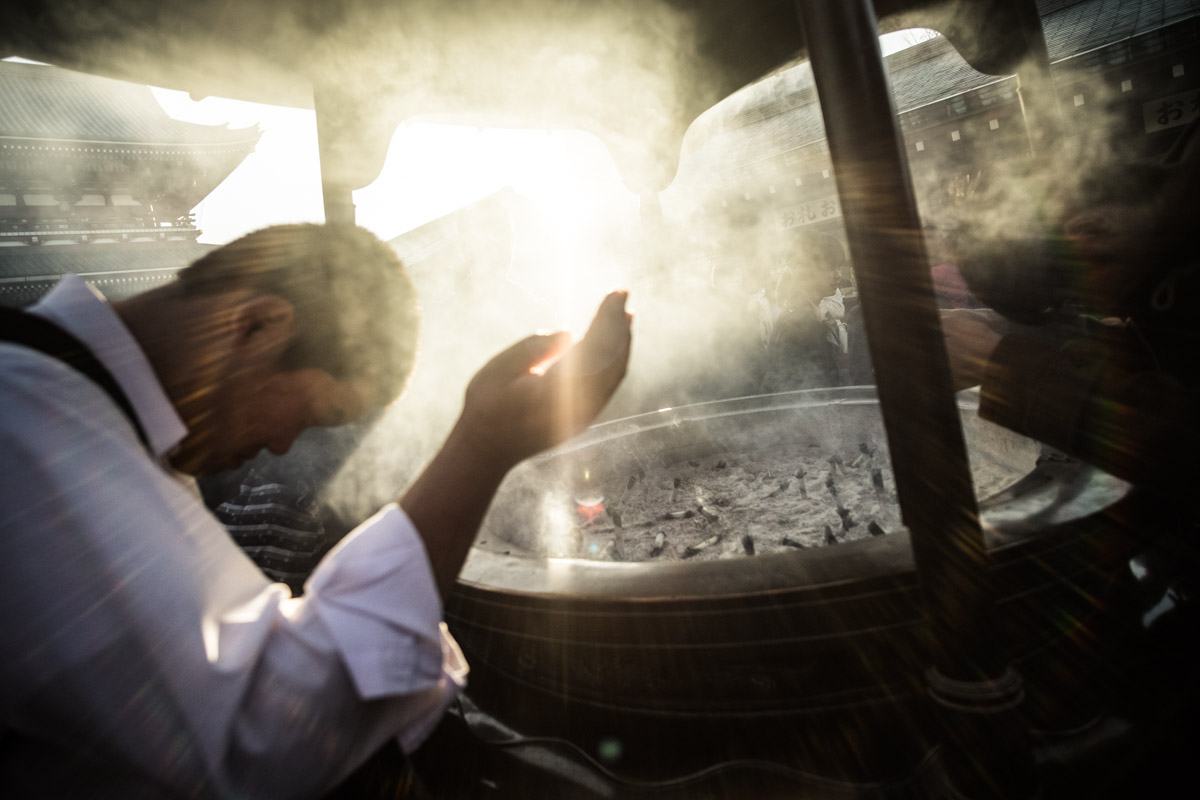
Tokyo (Japan), Dec 9th 2016. At the Sensō-ji Buddhist temple in the Asakusa area, a man prays and fan incense smoke towards himself. According to the tradition, this smoke is believed to have healing powers and devotee should fan it towards the part of their body they would like to heal or improve.
Even if estimates suggest that 84–96 percent of the Japanese population subscribe to Shintoism, Buddhism has been practiced in Japan since its official introduction in 552 AD by Korean Buddhist monks. Buddhism has had a major influence on the development of Japanese society and remains an influential aspect of the culture to this day.
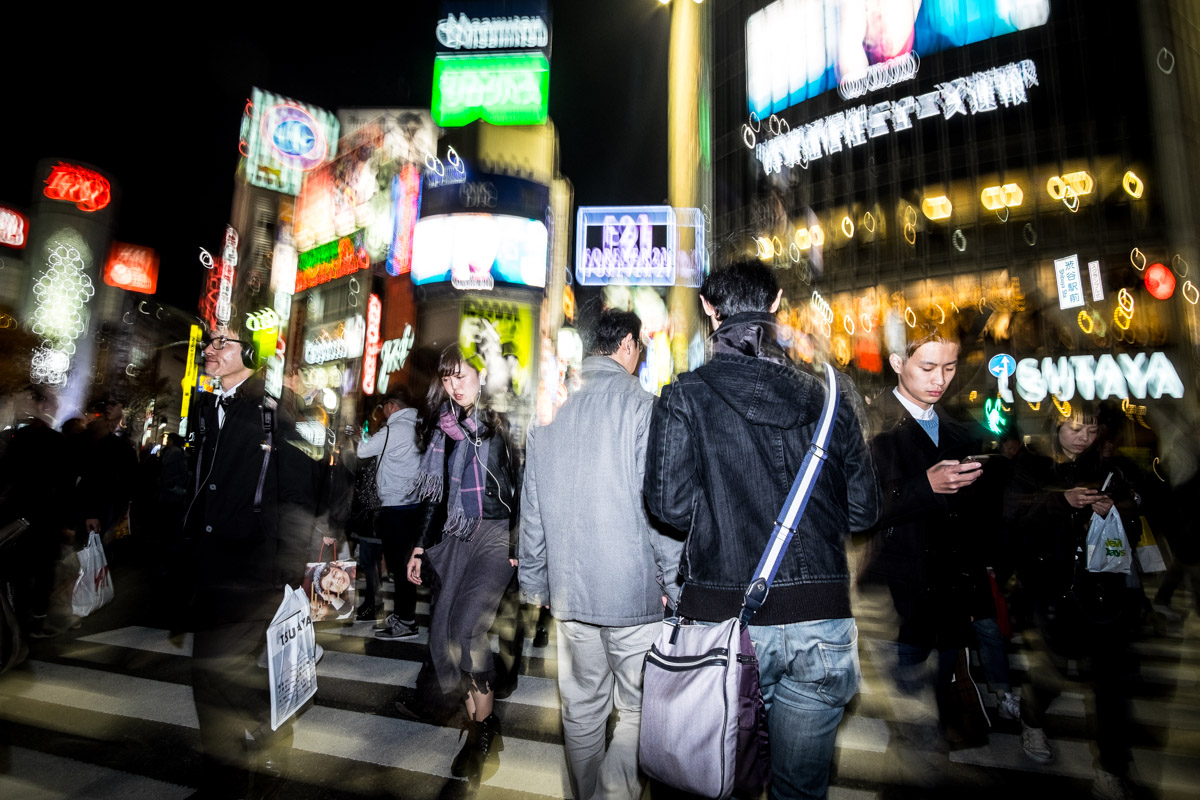
Tokyo (Japan), Dec 10th 2016. Under the neon lights of Tokyo's Shibuya business and commercial area, numerous pedestrian cross the street during the evening rush area.
This crossing, also known as “The Scramble” is believed to be the world's busiest pedestrian crossing, with up to 2,500 people crossing it at once, 45,000 every half an hour. With more than 35 millions inhabitants, Tokyo is the world’s most populous metropolitan area.
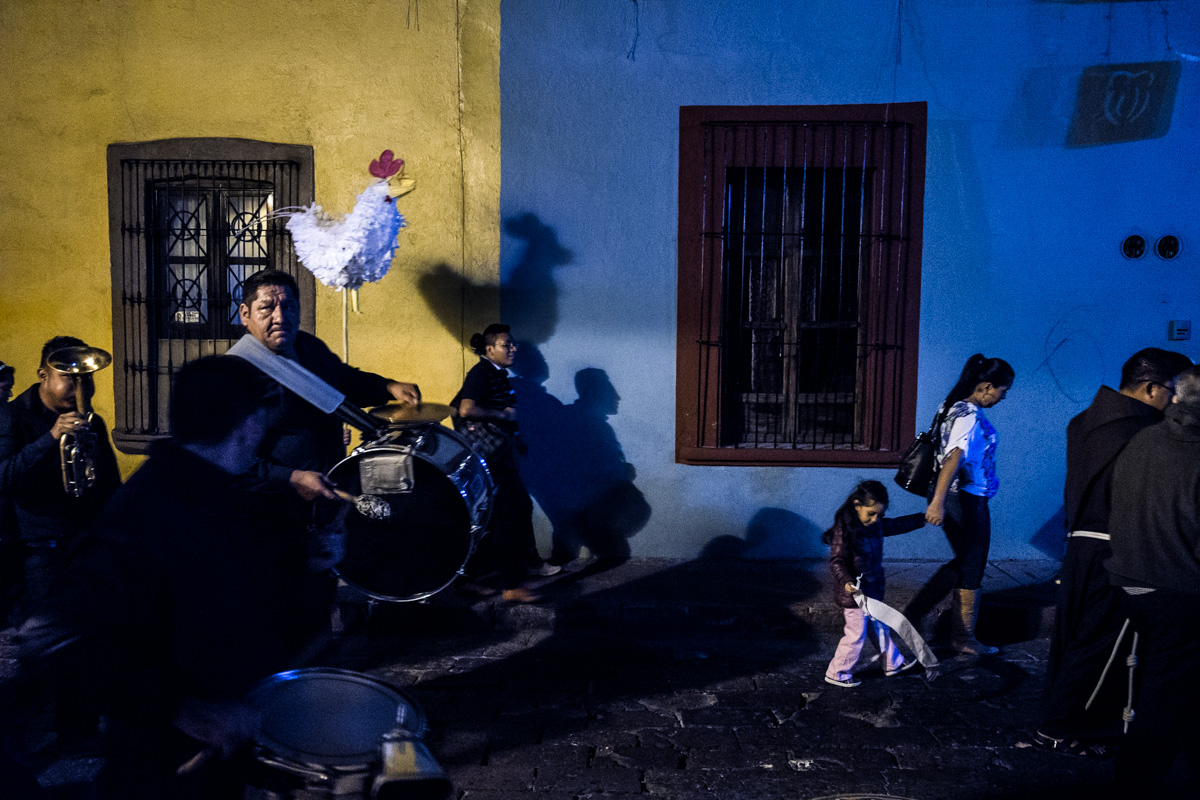
A procession through the streets of Querétaro, with a rooster referring to the tradition of 'palenque' (Mexican cockfight).
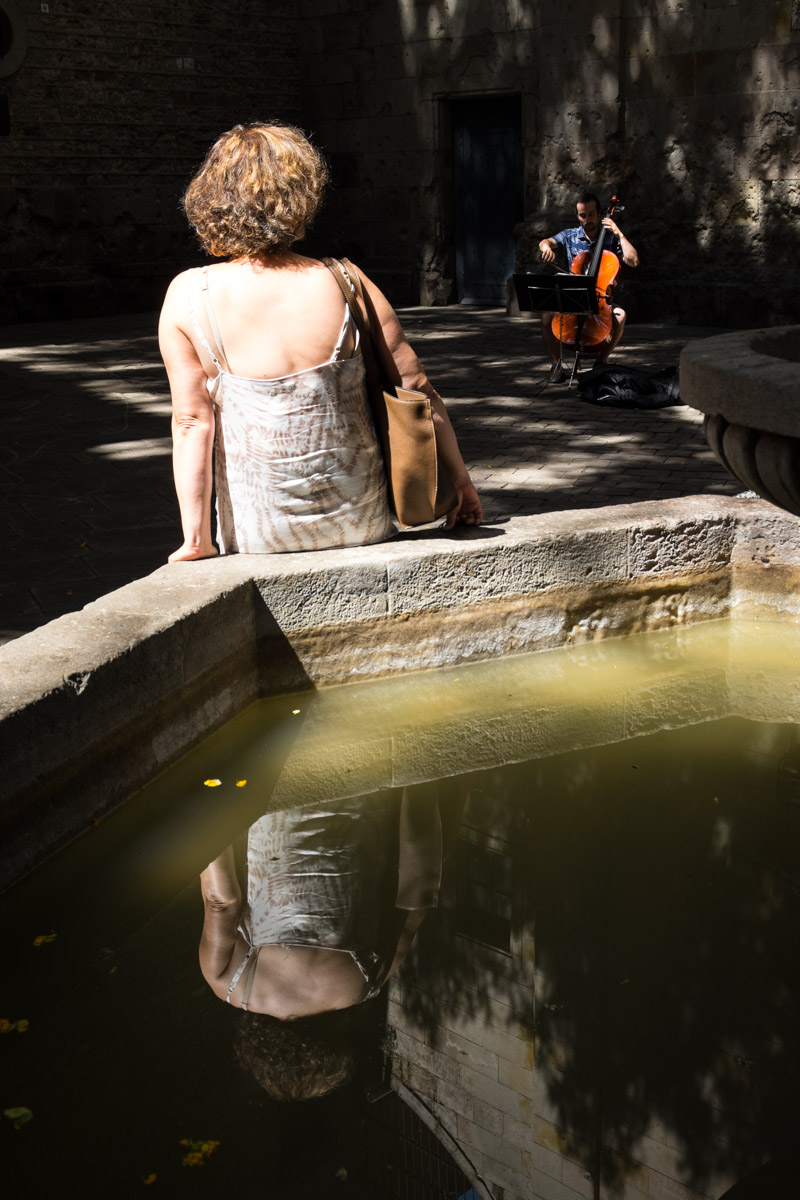
Barcelona, Aug 7th 2016. In Plaça Sant Felip Neri, one of Barcelona's most evocative squares, a musician plays the cello and is observed by a tourist.
The walls of this square, behind the cello player, are still marked with the holes provoked by a bomb dropped by fascist planes in 1938, during the Spanish Civil War, that ended the lives of 42 people.
Nowadays, Barcelona is a popular tourist destination, and tourism numbers in the city are staggering: more than 8 million people visited the city in 2016 alone.
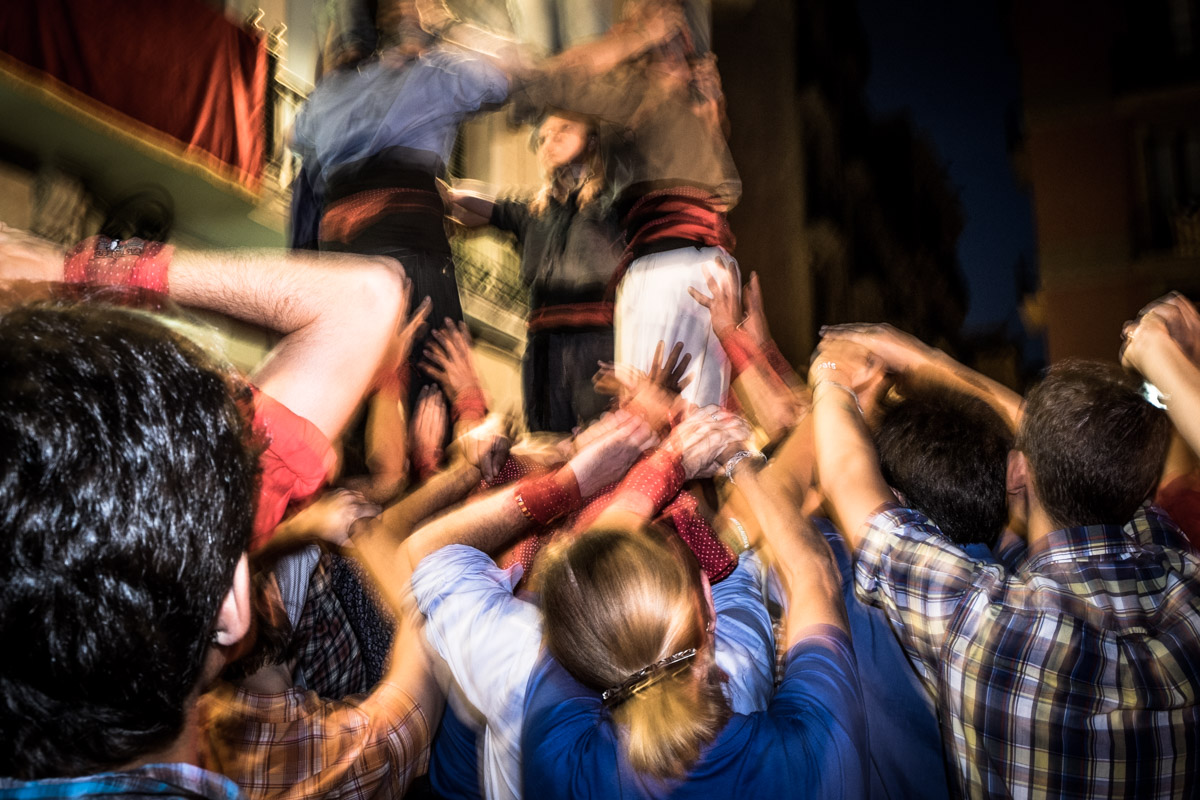
Aug 16th 2016, Barcelona (Spain). A 'castell' - a human tower built in traditional festivals at many locations within Catalonia, Spain - is built by a group of ‘castellers’ in Gràcia, one of Barcelona’s historic district.
On November 16, 2010, ‘castells’ were declared by UNESCO to be amongst the Masterpieces of the Oral and Intangible Heritage of Humanity.
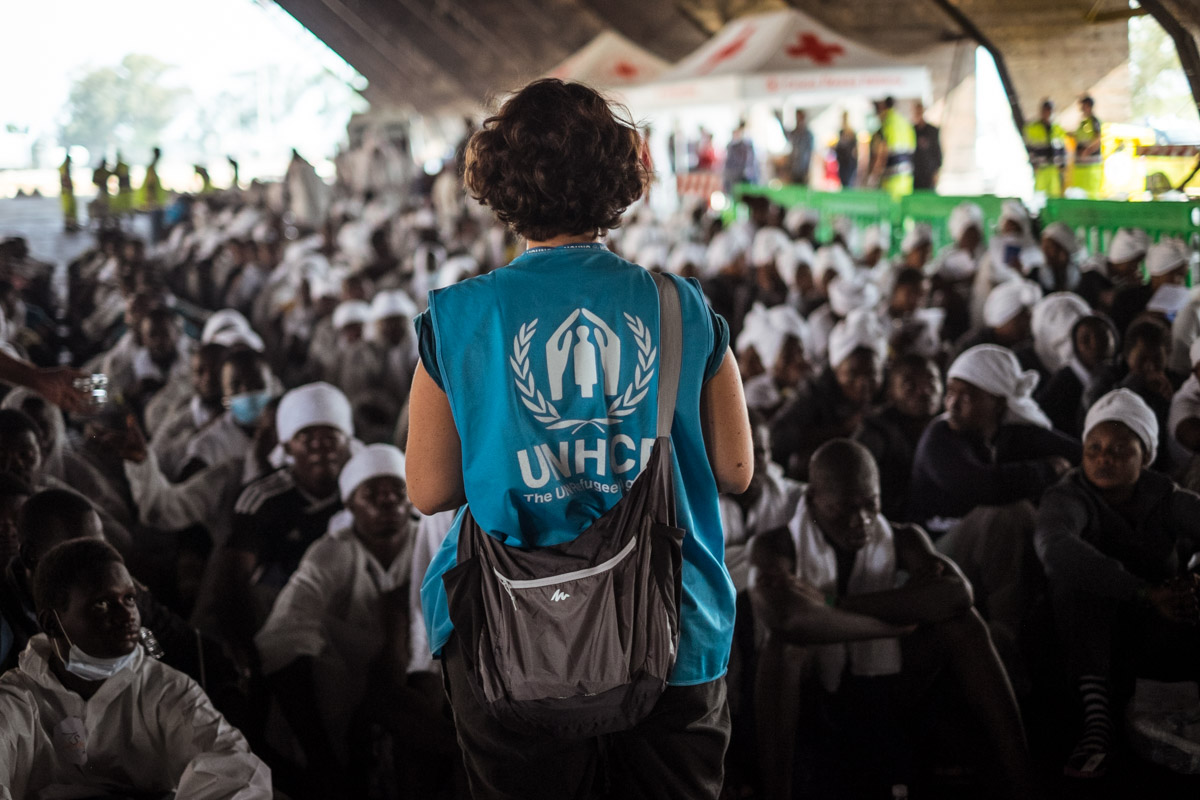
Brindisi's port (Italy), Sep 14h 2016. A group of migrants rescued at sea from a boat in distress and disembarked by the rescue vessel Aquarius in Brindisi (Italy), are informed about their rights by a UNHCR's representative.
The European migrants crisis remains dramatic in 2016. And if in 2015 the Balkans were the main point of entrance, after the EU-Turkey deal on refugees repatriation, in 2016 the Central Mediterranean Route is once again the busiest, and deadliest.
According to the IOM (International Organization for Migration), in 2016 alone more than 181,000 migrants reached Italy by sea, and more than 4,900 people died in the attempt.
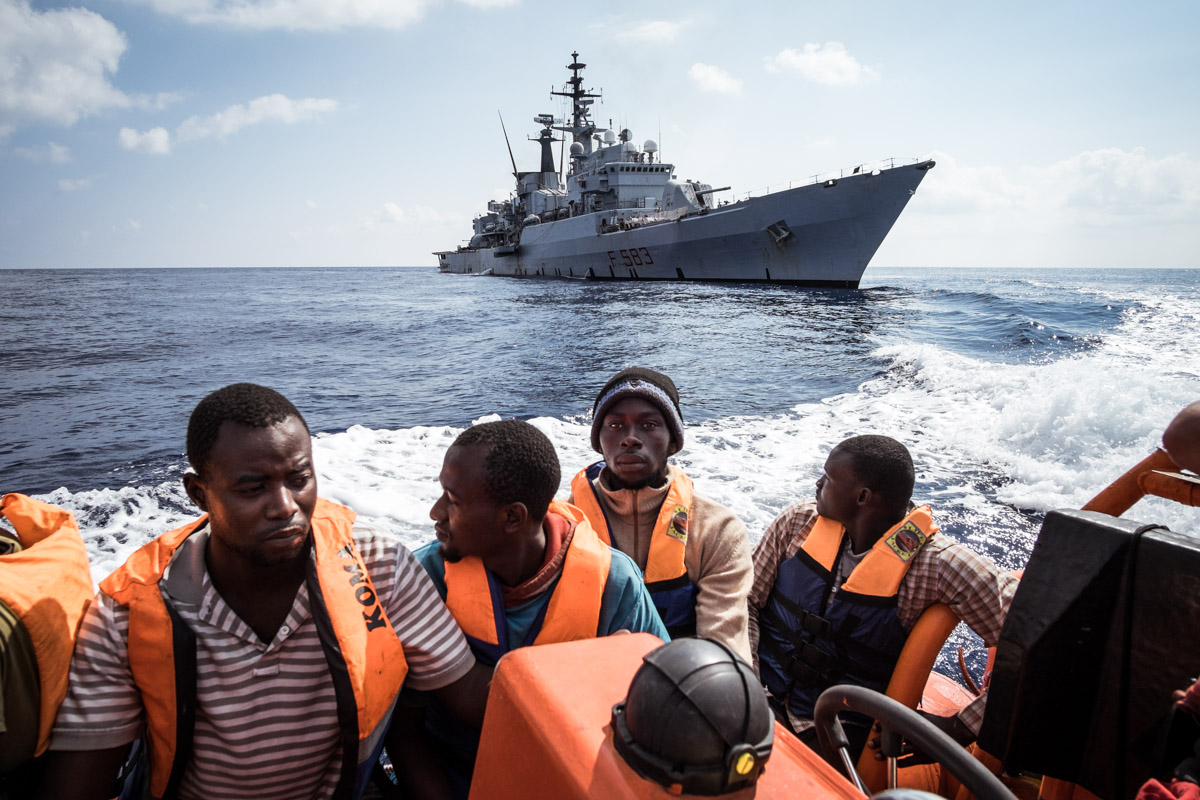
Sep 12th 2016, Mediterranean Sea, a few miles off the coasts of Libya. A group of migrants rescued from a boat in distress at open sea are transferred from an Italian navy ship to the Aquarius rescue vessel that will take them to Brindisi, Italy.
The European migrants crisis remains dramatic in 2016. And if in 2015 the Balkans were the main point of entrance, after the EU-Turkey deal on refugees repatriation, in 2016 the Central Mediterranean Route is once again the busiest, and deadliest.
According to the IOM (International Organization for Migration), in 2016 alone more than 181,000 migrants reached Italy by sea, and more than 4,900 people died in the attempt.
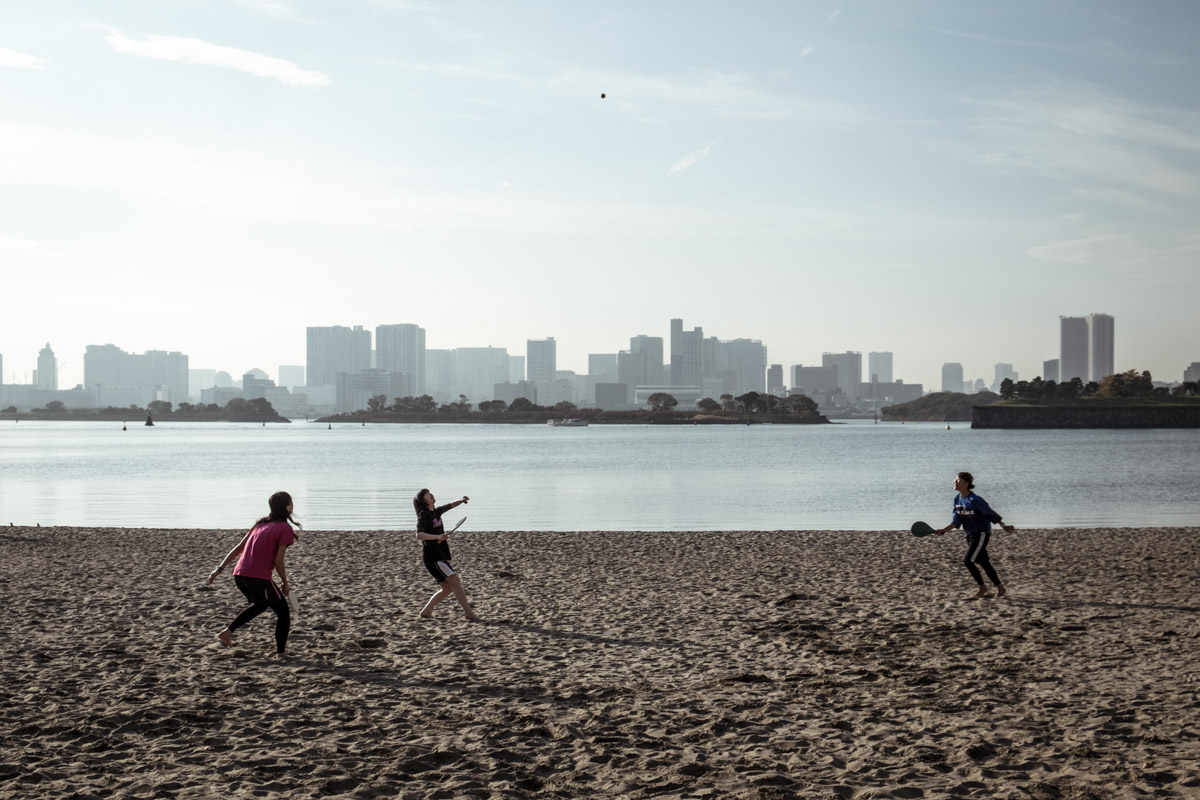
Tokyo (Japan), Dec 4th 2016. Three girls play with rackets at the beach in Tokyo's Odaiba area.
Odaiba is an artificial island in Tokyo Bay, across the Rainbow Bridge from central Tokyo. Initially built for defensive purposes in the 1850s, it was developed since the 1990s as a major residential and leisure area. With more than 35 millions inhabitants, Tokyo is the world’s most populous metropolitan area and largest urban economy.
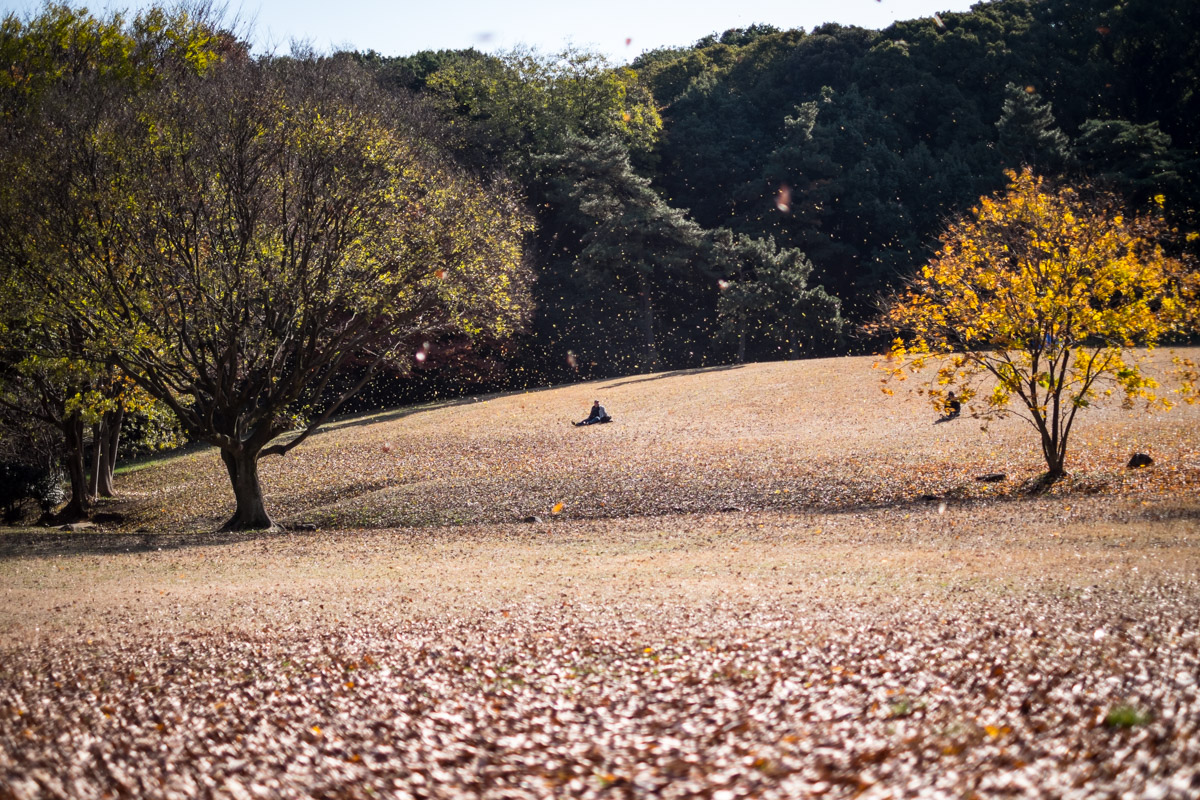
Tokyo (Japan), Dec 6th 2016. A man sits under leaves falling from the surrounding trees in the park belonging to the Meiji Shrine.
This park, located in central Tokyo, covers an area of 70 hectares covered by a forest that consists of 120,000 trees of 365 different species, which were donated by people from all parts of Japan when the shrine was established.